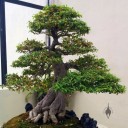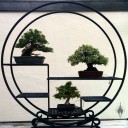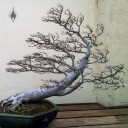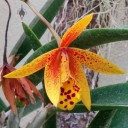National Bonsai and Penjing Museum
Bonsai is the art of growing small trees in containers. Each potted tree is carefully shaped and pruned to evoke an idyllic natural scene. There’s no better place to marvel at them than the National Bonsai and Penjing Museum at the US National Arboretum in Washington DC. I was able to enjoy this spectacular little forest of bonsai trees during a recent family visit to the East Coast.
Many people already know about bonsai, but penjing is a less common term. Penjing is the ancient Chinese art of creating miniature nature scenes. This was later adapted in Japan to create bonsai. There are many different styles of both bonsai and penjing, but generally, bonsai focuses on a tree or group of trees, while penjing creates landscapes, often with trees, rocks, and other plants. Beautiful trays or shallow pots hold the displays.
These tiny trees need regular water, sunlight, and temperatures appropriate for each species. They fare best when grown outdoors for most or all of the year. They are only brought inside for cold winters or harsh weather, and returned to the sun and fresh air as soon as possible. Growers temporarily wire branches to create specific shapes and designs. By keeping them in small pots, and pruning their branches and roots, the trees stay dwarfed. Even though they’re small, well-grown bonsai appear large and ancient. Expert daily care can keep them alive until they’re very old. Amazingly, the very first photo in this post depicts a Japanese White Pine which started cultivation in Hiroshima in 1625! It even survived the atomic bomb dropped on that Japanese city at the end of World War II. The Japanese family which nurtured this tree for six generations gave it as a gift to the USA for 1976’s bicentennial celebrations.
Of course, I’m always looking for orchids, and I found a few among the trees in the museum’s Tropical Conservatory. The only one in bloom during my visit was the brilliant Cattleya hybrid in the final photo. There was also an enormous Bamboo Orchid, but it didn’t have any new flowers. Visit the National Bonsai and Penjing Museum — it houses a forest full of bonsai and much more! Learn about bonsai basics at BonsaiEmpire.com.
Explore posts in the same categories: General Gardening, Photos
Subscribe to the About Orchids Blog:
![]()











